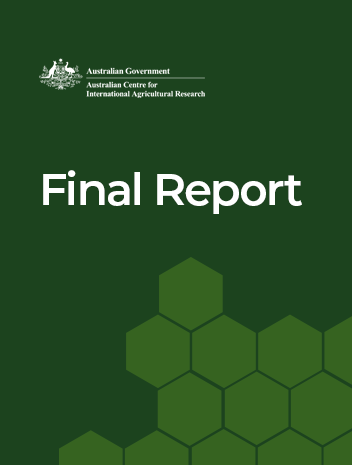- HomeHome
-
About ACIAR
- Our work
- Our people
-
Corporate information
- ACIAR Audit Committee
- Commission for International Agricultural Research
- Policy Advisory Council
- Agency reviews
- Executive remuneration disclosure
- Freedom of information (FOI)
- Gifts and benefits register
- Information publication scheme
- List of new agency files
- Contracts
- Legal services expenditure
- Privacy impact assessment register
- Commonwealth Child Safe Framework
- Benefits to Australia
- Careers
- 40 years of ACIAR
-
What we do
- Programs
- Cross-cutting areas
- Resources
- Where we work
-
Funding
- Research projects
- Fellowships
-
Scholarships
- John Allwright FellowshipScholarships to study in Australia for ACIAR partner country scientists to have Australian postgraduate qualifications
- ACIAR Pacific Agriculture Scholarships and Support and Climate Resilience Program
- Alumni Research Support Facility
- Publications
- News and Outreach
Project final report
Restoring damaged coral reefs using mass coral larval reseeding - Final Report
Date released
28 August 2023
ISBN
978-1-922983-51-0
Publication Code
FR2023-044
Overview
This project aimed to actively restore damaged reef coral communities in the Bolinao-Anda Reef Complex (BARC) located in Northern Luzon region of the Philippines using mass coral larval restoration and to evaluate the socio-economic impacts of reef restoration strategies.
Coral reefs, vital for ecosystem services, are under global degradation, impacting nations like the Philippines and Australia. Restoring these reefs could enhance local ecosystems and socio-economic development. The project's success suggests scaling up coral restoration across the Philippines by establishing and training networks involving local communities, government agencies, researchers, and the private sector to restore degraded reef ecosystems. The project achieved significant outcomes for its objectives, with key achievements briefly summarised below.
New data on coral spawning periods on Bolinao-Anda reefs in northern Luzon has allowed for mass larval rearing on reefs and in the lab. Large multispecific events were recorded after full moons in 2016-2020, and a new technique was developed to collect spawn slicks. Fertilisation rates are optimised using sperm densities and egg-sperm combinations.
Seven coral larval restoration reef trials were conducted in two municipalities of Pangasinan Province, including high-density restorations of Acropora tenuis and A. millepora, multispecies restorations at Hundred Islands National Park, and controlled larval release methods at HINP and Caniogan reef, with timing optimised for optimal settlement.
Coral larval restoration has been successful in degraded reef areas, with multiple new breeding populations established. In 2018, larger 2016 restored Acropora tenuis colonies reproduced after only two years, setting a world record. A third generation of restored corals was established in 2021. Monitoring shows persistent survivorship and growth, with increased coral cover and fish abundance in larval restoration plots. Higher damselfish and butterflyfish abundance coincide with increased coral colonies.
The project has published 12 new research papers, supported HDR completions of three PhD, 2 Masters, and 1 Honours students, completed training workshops on reef restoration and choice modelling, and engaged with local government and NGOs.



